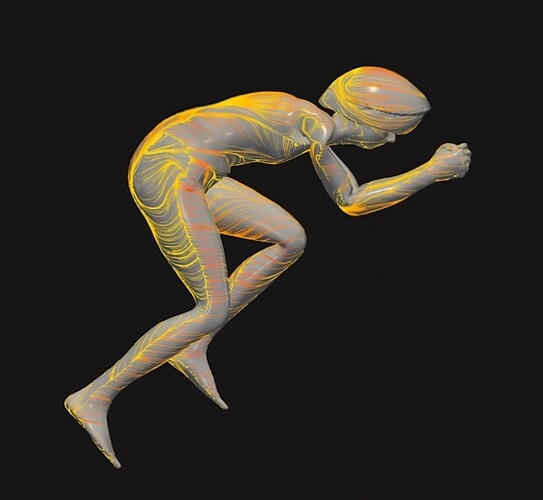I run a lot of CFD simulations for my work with Team USA so I developed tools that allows me to quickly test how different things affect the airflow around athletes. Last week trying2hard asked me if I had tested bottle positions, so I tested a few different set ups both in front and behind the rider.
To keep simulation time and work load manageable, I only simulated athlete, helmet and bottle, I did not include a bike, or bottle cage. I could see specific bottle holders affecting drag on their own, so keep that in mind. The simulation parameters all match best practices outlines in academic literature, and I wind tunnel validated the simulation approach myself last year and got good alignment.
.
.
.
Baseline position: CdA 0.222m²
I recreated a position based on my own 3D model, but in a position inspired by Matt Steinmetz excellent articles on the Taupo and Hawaii positions.
The CdA without a bike is 0.192m², which comes out around 0.222m² with a pro level tri and tt bike. This matches the numbers I would expect for a relatively upright position (I mostly work with pursuiters and WorldTour TT riders, which don’t have to hold their position as long, and have significant more resources allocated towards their aerodynamics)
.
.
.
Front Bottles
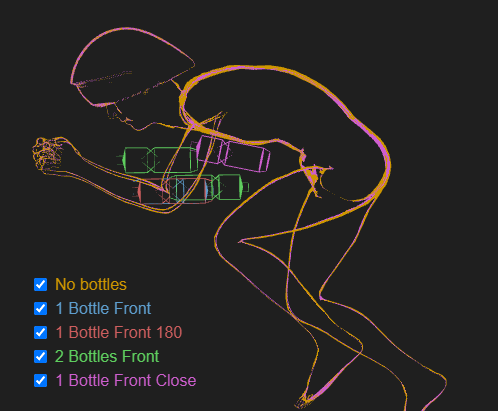
Every BTA bottle was faster than no bottles:
Regarding the orientation of the bottle (forward vs back facing), I would take the results with a grain of salt, as it probably depends on your exact bottle shape.
.
.
.
Rear Bottles
I tested a variety of rear bottle positions and the results were clear: Get the bottles as close to your body as possible and horizontal. If you ride the nose of a long saddle, your bottle carrier is most likely too far away.
The best result came actually when placing the bottle directly against the back
and low, like in a (low) jersey pocket, with the potential to save almost two minutes over the ironman distance.
The bottles in the back work as a spoiler to promote flow seperation on the lower back. If you look at the streamlines over the back of an athlete you can see that someair gets bent almost vertically down. This is creating a lot of lift and induced drag:
Placing a bottle on the lower back can disrupt this flow pattern and encourage the air to leave in the same direction it came from.
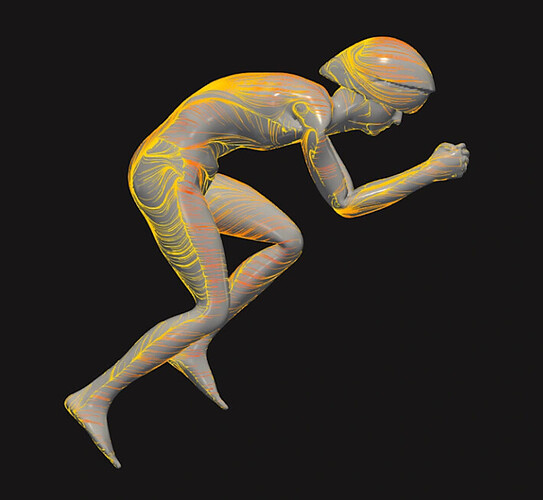

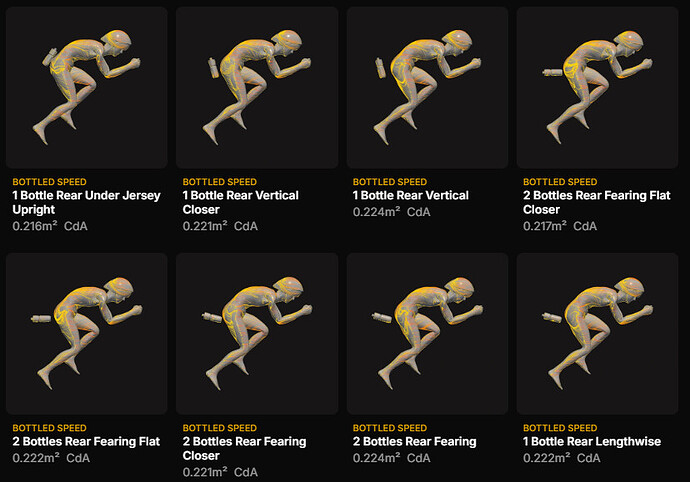
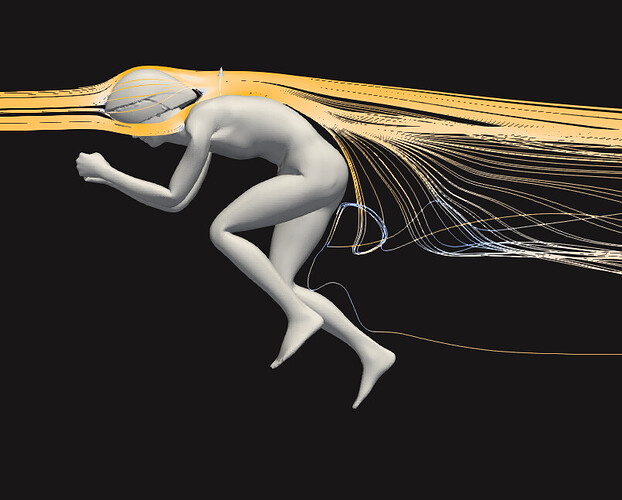
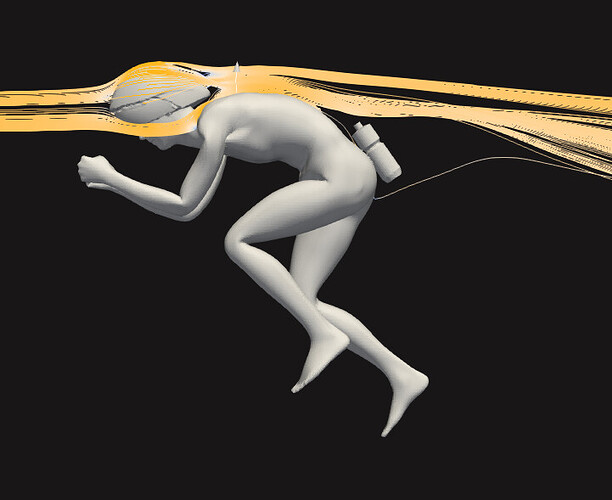
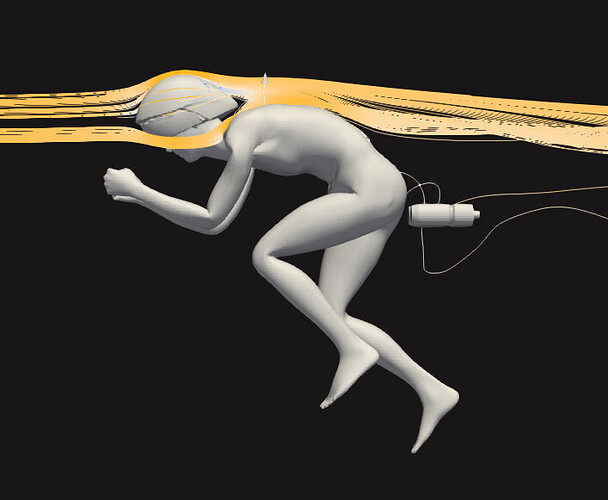
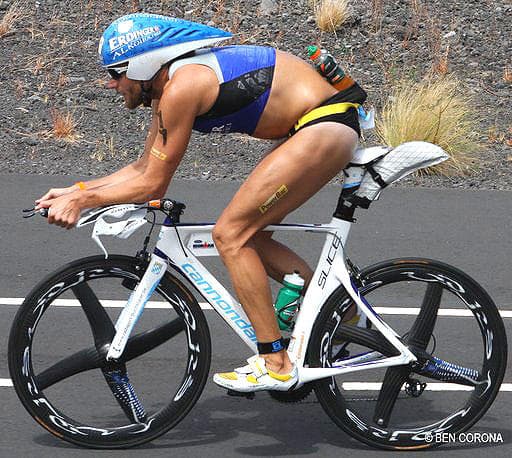
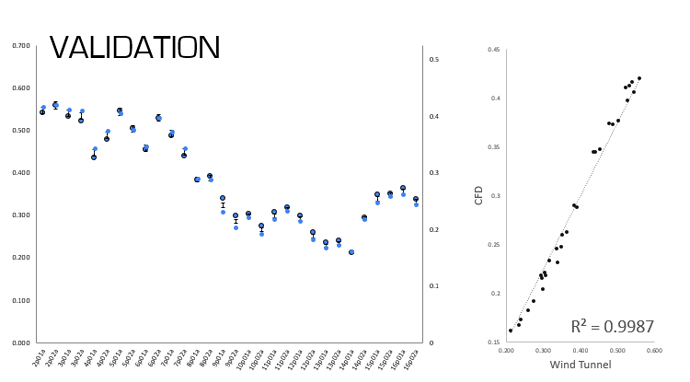
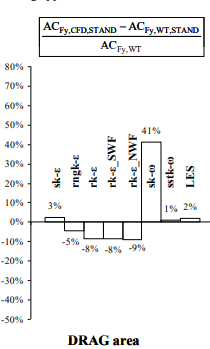 .
.